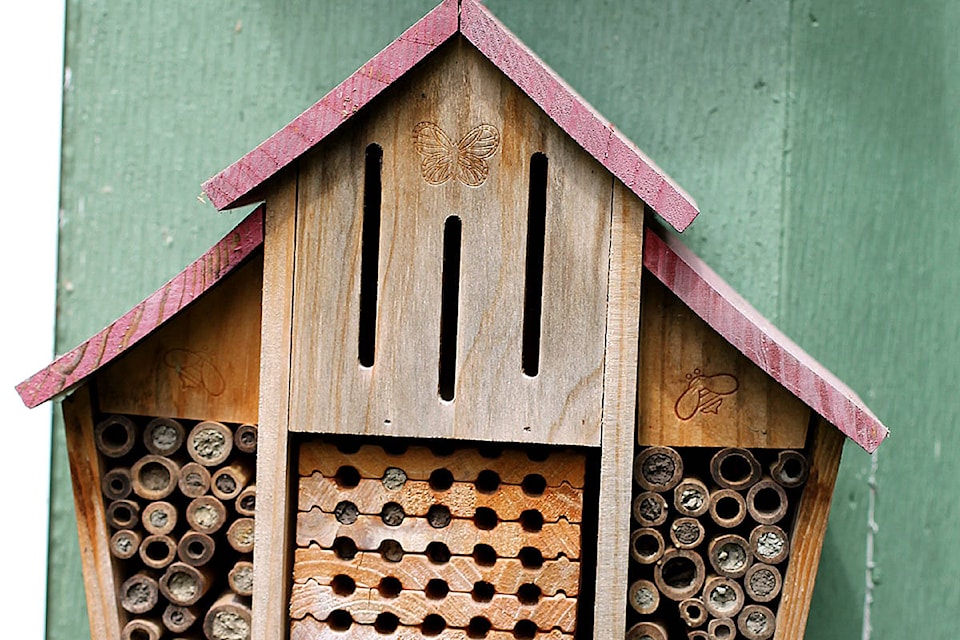By David Clements/Special to Langley Advance Times
So much of our building as humans on earth tends to be bad for the planet.
As we construct houses, subdivisions, and cities, the creatures that used to call these places home are often displaced.
Yet, sometimes amidst all of this building, nature finds a way, and there is a thriving discipline of urban ecology, wherein scientists study how many organisms still thrive in our cities.
Ecology is the study of home life – derived from the Greek oikos that means home.
We can also build homes specifically for certain creatures.
RECENT COLUMN – GREEN BEAT: Early detection can help protect against invaders
Last year, for the first time, my son Luke and his wife Alivia put up a mason bee house here at our home (Luke and Alivia live downstairs).
We were amazed how the mason bees came in droves to occupy their new home that first spring, and then this spring even more came.
If you build it, they will come!
Luke is in training to become a shop teacher, and was inspired to get his wood shop students to build mason bee homes.
RELATED: TWU-driven team researches threat of invasive species to Metro Vancouver
Some of these student projects have ended up in our yard now too – and so a mason bee metropolis is unfolding before our eyes.
Female mason bees forage for pollen from a variety of blossoms, depositing about 20 pollen loads in the chamber at the end of their tube homes before sealing it with clay so their larvae can feast on the pollen in peace.
The bees repeat the process until the tube is filled with 7-11 or so pollen chambers.
Mom mason bee is busy here from the first warm days in March or April, gathering pollen and preparing chambers for a month or so.
The young bees pupate over the summer and although they transform into adults in late summer it is not until spring that they emerge to begin the life cycle anew after hibernating over winter.
Regarding the “birds and the bees,” the males emerge a little earlier so that when the females chew their way out of their home, they are often met by a hovering suitor right away.
The bees appear black, and about 1.5 cm long, but if you look at them closely in the sun they take on a beautiful blue or green metallic sheen.
And mason bees are just one of many creatures for which we can build homes.
RELATED: Langley’s Larri Woodrow named conservationist of the year
This week my neighbour, the “bird box man,” Larri Woodrow was named BC conservationist of the year by the BC Wildlife Federation.
Larri has been building and installing wood duck boxes for five decades… following the same principle of… if you build it, they will come!
.
– David Clements PhD, is a professor of biology and environmental studies at Trinity Western University
.
Story tag
.
